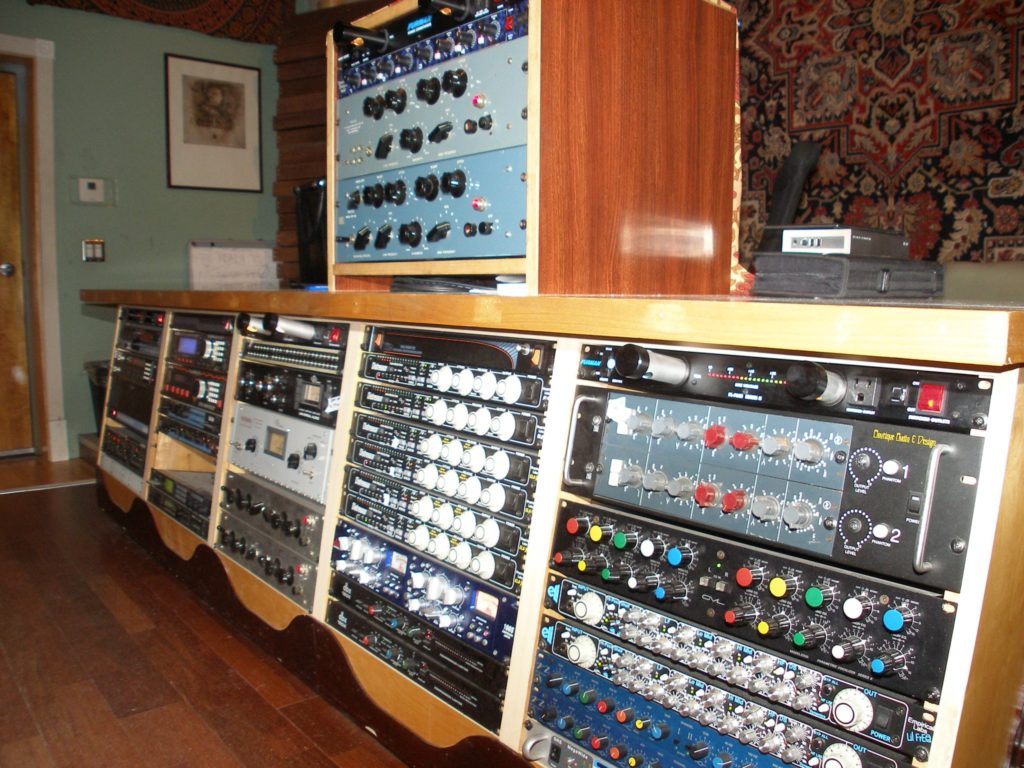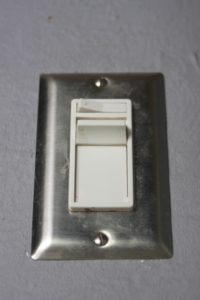Grid Noise
We all know that the energy we receive from our local utility is full of noise. There is a whole industry out there of power conditioning companies who will for a fee provide you with a filter to take this noise or that noise out of the grid system for you. Gear companies will even provide you with gear that has its own power supply, so that their equipment does not have to use that noisy grid energy. Even power fluctuations can occur at different time periods during the day depending on the specific demand on the grid itself. Our studio usually runs at 121 volts during the day but in the evening it can go to 123 volts and even 125 volts after midnight.
Equipment Energy
Once we have the issue of producing clean energy for our studio resolved, we can deal with the noise produced by the electronic equipment that will reside within our studio. Each unit in the signal chain has some type of electronic signature. Noise energy can be transmitted through the power wires of our studio to other units or even be distributed through the air. Remember, amplifiers do what they were designed to do, they amplify both pure signal and don’t forget about the pure noise.
Equipment Is Amplifier
The electric guitar is a good receiver/amplifier because of the way the electronics are made inside the guitar. The pick up of the guitar is a coil of copper wire which receives the signal and then sends it to an amplifier which is another device that has coils encasing a piece of iron to guess what, create an electromagnet. Thus, both the pick up and the amplifier share the same electrical DNA by acting like transformers which radiate and receive electrical fields. There are also pick ups that have two or more coils.
Humbuckers
Humbucker pick ups are known for their unique sound quailty. The famous Humbucking pickups have two coils that are wired out of phase with each other. Thus, the noise that is shared with the coils is in phase and eliminated from the system. This is a common electrical technique for dealing with noise within the lines of our electrical systems. Computers also share this same genetic code.
Noisy Computers
Laptop and desk computers also have coils within them. Look at any circuit board and one will find tiny cylinders of copper wound wire. Electrons are flowing through these coils to assist in the production of video images. Even the popular flat panel, LED and plasma, have coils inside of them. There is always a light source behind the panel screen that produces the color images. This process of providing the energy for the screen light and then the panel itself also produces noise. Watch how you run your cables together. Keep all power cables well away from video and audio signals. If they do have to cross, make sure they cross perpendicular to the audio and video cables.
Dimmers
Dimmers are a device that must be used with caution. Watch the quality level you use in your studio and do not use any dimmers that were made for your home. They produce too much noise because of the electrical process they use to “dim” your lights. These residential dimmers to not vary voltage to dim your lights. Instead they take a knife to our 60 cycle electrical wave and divide it into pieces. They use small pieces of the wave for dim light and all the wave not chopped up for the brighter light. Always use what is called a Variac dimmer. They do not generate the high frequency noise that will travel through the air, but keep the transformers away from your gear just to be safe.
Cable Connector Mount
The way your cable connector is mounted to the gear chassis will also play a factor in how much resistance to noise the unit has. Our electrical goal is to create an electrical bypass so that the noise will exit the cable and flow into something else other than be transferred to our unit. If the noise gets into the unit, it is much harder to find and eliminate within the circuitry. This is called the PIN-1 nomenclature used within the electronic literature.
XLR, RCA, Firewire, USB
XLR, RCA, Firewire, and USB are all connectors that can have issues with this dilemma. The shield / pin-1 connector must be routed directly to the metal chassis. Some connectors are isolated from the gear chassis because it is easier to make in the manufacturing process. Manufactures run the signal path from pin-1 through a printed circuit to save space and money, but this process amplifies all the noise before sending it to ground. Keep the ground out of the circuitry.
Noise In / Noise Out
We must be conscious of the noise within the power that comes into our studio and then once inside, we must be careful with the noise that power can create within our gear. Computers, cable connectors, and even dimmer control devices must all be examined for noise producing capabilities. Watch for the transformer concept with pick ups and the ground connection on all our gear’s metal housing.







